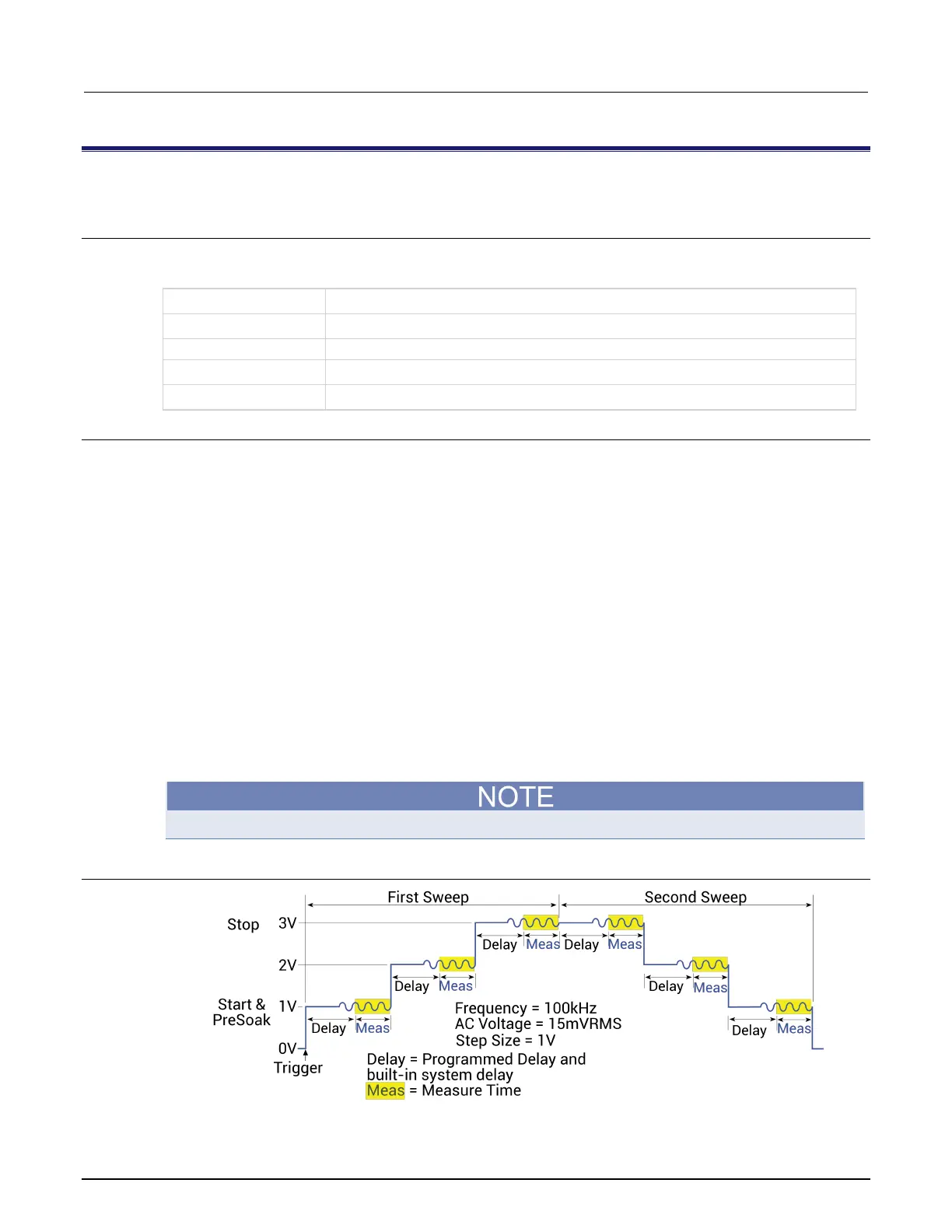13: LPT library function reference Model 4200A-SCS Parameter Analyzer
13-174 4200A-901-01 Rev. C / February 2017
dsweepv
This command performs a dual linear staircase voltage sweep.
Usage
int dsweepv(int instr_id, double startv, double stopv, long numSteps, double
delaytime);
The instrument identification code of the 4210-CVU: CVU1
Initial force value for the sweep (−30 V to 30 V)
Final force value for the first sweep (
−
Sets the number of points in the sweep (1 to 4096); see Details
Delay before each measurement (0 to 999 s)
Details
This command is used to perform a dual staircase sweep (see the figure below). The linear step size
to sweep is set using the startv, stopv, and NumSteps parameters. The linear step size for the
sweep is then calculated as follows:
StepSize (in volts) = (stopv – startv) / (numSteps)
numSteps describes the first half of the sweep. For example, to do a dual sweep from 1 V to 10 V
and back down in 1 V steps, set numSteps to 10. The result is a 20-point sweep (10 up and 10
down).
The first sweep can step forward (low voltage to high voltage) or it can step in reverse (high voltage to
low voltage). After performing the first sweep, the second sweep will repeat in the reverse direction.
For example, if configured to sweep from 1 V to 10 V, the second sweep will start at 10 V and step
down to 1 V.
The delayTime parameter sets the delay that occurs before each measurement. Note that there is
an inherent system overhead delay on each step of the sweep.
Use the setfreq and setlevel commands to set the AC drive frequency and voltage for the
sweep.
Use the sweepv command to perform a single linear staircase voltage sweep.
Example
